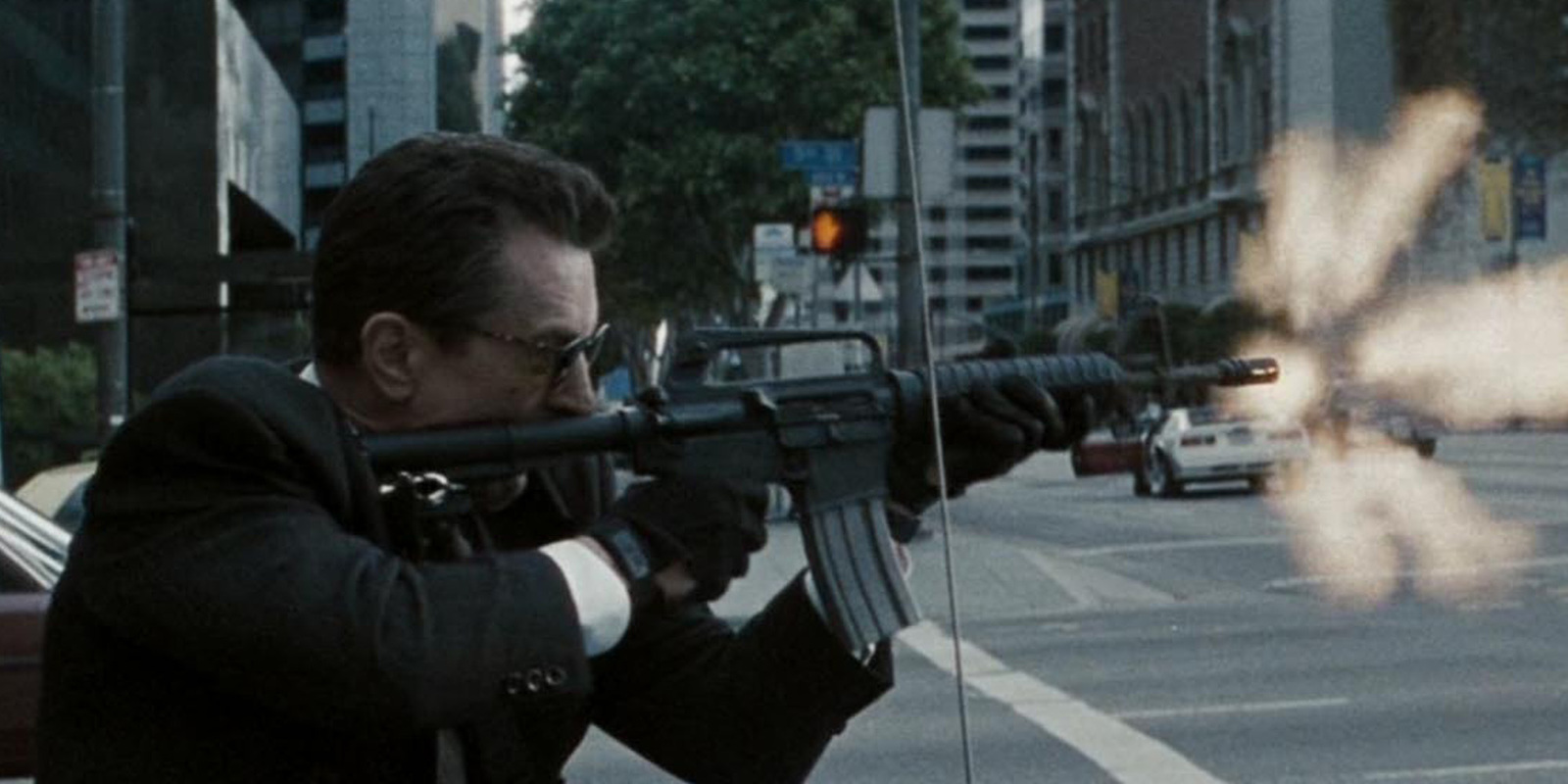
The great Jean-Luc Godard once said, “All you need to make a movie is a girl and a gun”. While the French auteur is known for many achievements in cinema, action films is probably not at the top of the list. However, Godard’s quote has become quite synonymous with cinema as it perfectly illustrates how the simple things will keep an audience entertained, including the excitement of onscreen violence.
Violence in cinema comes in many forms from martial arts to sword fights, from car chases to battles. However, since the earliest days of cinema, gunfights have been some of the most revered and loved sources of excitement and tension. While some are poorly made and rely on loud noises, quick edits and lots of blood, some gunfights not only tell a perfectly crafted story through action, they elevate films to higher levels of drama.
The gunfights on this list are best remembered by audiences for a range of reasons: some for simple reasons like style, setting and level of brutality, others however redefined cinema gunfights, introducing new film techniques, hybrid styles of fighting (Gun Fu) and raising the stakes in interesting and sometimes humorous ways. These films show that a truly great gun fight cannot be made by luck, it needs to tell a story visually, it needs to raise the stakes, it needs the audience to care.
20. The Way of the Gun (2000)
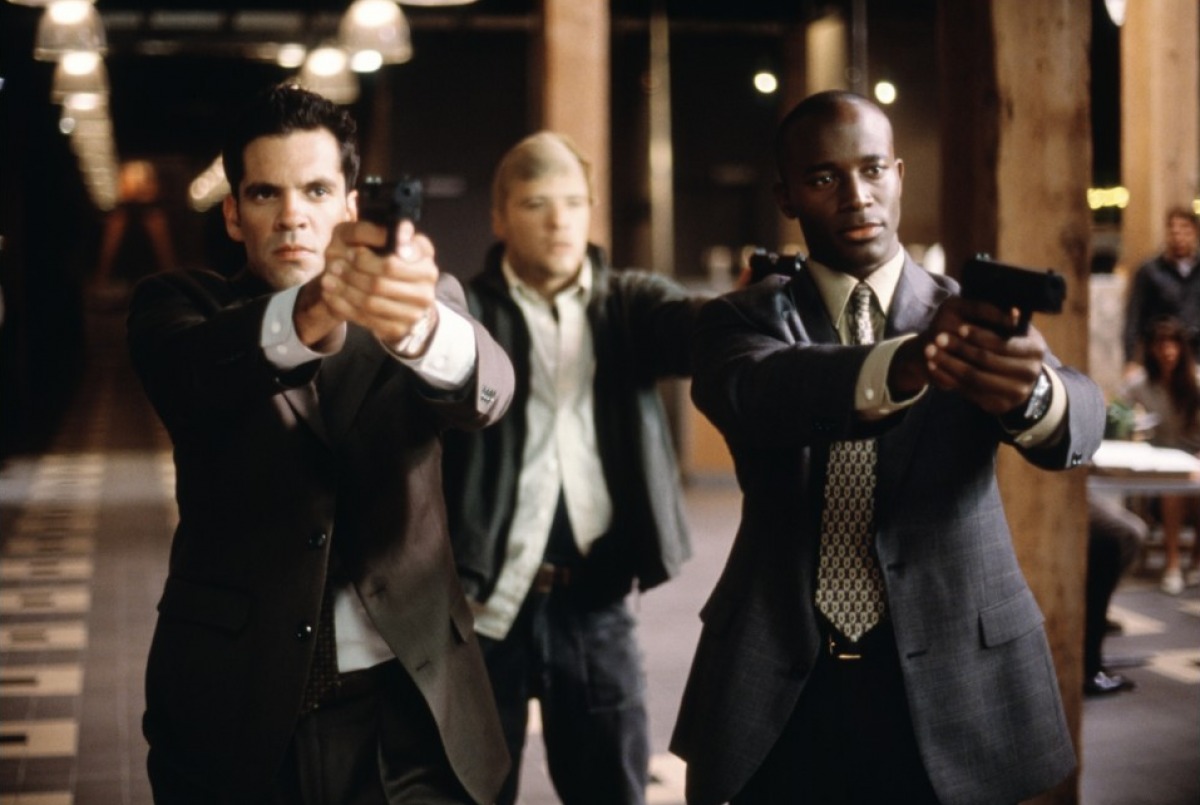
Best known for The Usual Suspects and Jack Reacher, Christopher McQuarrie actually made his directional debut in 2000 with the little known crime caper The Way of the Gun. Just like his work on The Usual Suspects, McQuarrie aims to subvert the crime genre. Our ‘heroes’ are women beating petty criminals not above torture, while our ‘villains’ seek to rescue a pregnant women.
Even the film’s car chase is different, with characters slowly rolling their vehicles through an alleyway, stopping briefly to exchange gunfire. It may be the slowest car chase ever committed to cinema, but McQuarrie still builds the tension. Not bad for a first time director.
The film’s hallmark moment however is the final set piece, a gunfight in an abandoned Mexican town. At the town centre, a $1 million sits in several bags in plain sight. The two kidnappers know that it is a ambush. “There’s always free cheese in the mousetrap” one says to the other. Despite being his directional debut, McQuarrie has been able to methodically construct a brilliant gunfight.
This is not an action scene made up of two sides simply firing at one another but rather a breakdown of a gunfight. Henchmen are brutally gunned down, the protagonists are gradually torn down from injuries (including one particularly painful moment involving a well filled with broken glass) and cover is almost non-existent. Despite presenting us with a chaotic battle, the audience is never lost.
19. Exiled (2006)
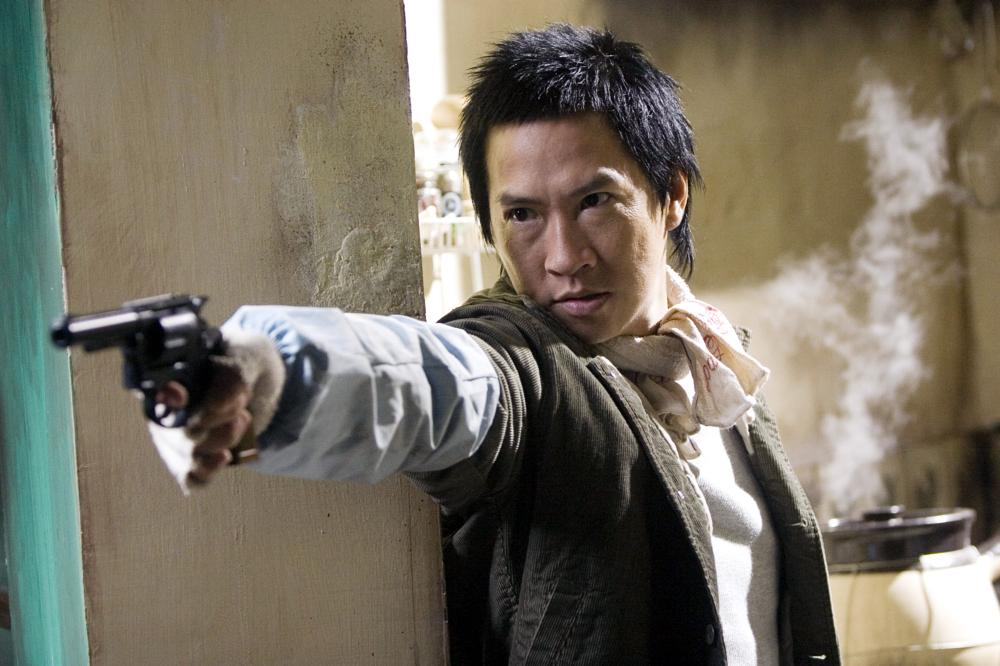
Hong Kong director Johnnie To and his filmography could occupy this entire list. Action classics such as Election, Breaking News, Vengeance, The Mission, Life Without Principle and Drug War are highlighted by original and daring action scenes but when it comes to action as an art form, you cannot pass on Exiled.
The choice to set the film in Portuguese inspired Macau as opposed to his traditional hunting ground of Hong Kong brings a new aesthetic to To’s films. One that evokes a Western flavour mixed with a Gun Fu aesthetic. Beginning with a Mexican standoff, the bullets start to fly after a soda can is kicked around like soccer ball before being launched into the air. Before it has touched the ground, four hit men, a Triad boss and his henchman lay on the ground bleeding or dead.
The presence of the flying soda can acts as a reference point for the audience to understand just how quickly the fight went in real time. This was a shootout that would last only a few seconds but To places a pathologists eye upon the gunfight. This is an autopsy, examining every key moment of the gunfight. Who fires at whom and at what point they hit the ground. To’s deconstruction of a gunfight brings a unique perspective to the heroic bloodshed genre.
18. Open Range (2003)
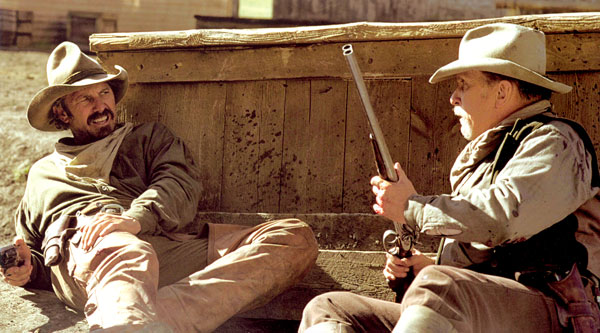
Is the Western genre dead? Not if Kevin Costner has anything to say about it. Costner clearly has a love for the once prominent genre appearing in several westerns throughout his career including Silverado, Wyatt Earp and Hatfields & McCoys. His directional debut, Dances with Wolves, was a homage to the classic epic Westerns from decades before and his sophomore effort, The Postman, could be classified as a Neo-Western (although the less said about it the better).
Open Range, however, is Costner’s lost masterpiece. A simple story told with a great cast and a love for the genre has crafted a film sadly forgotten in an age with little time for the classic western. However, the stand out for the film is its final gunfight. Shot with a wide lens and an emphasis on realism, Costner allows you to relish in nostalgia and embrace a modern cold-blooded hero.
Attention to detail and a sense of geography make this particularly long gunfight easy to follow as well as entertaining.
17. Deadpool (2016)
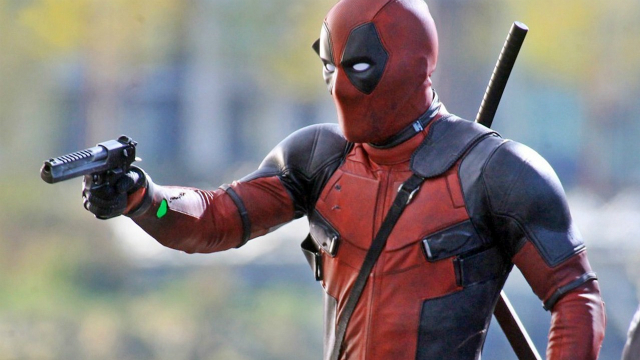
The key to a great action scene is the stakes. What are the stakes and how do I raise them? Some directors focus on grand stakes (saving the world) others smaller (saving an individual). As the action progresses, the stakes rise with failure quickly becoming a possibility.
So how do you raise the stakes for a character that cannot die?
This is obviously a dilemma for a character like Deadpool. The merc with the mouth need not concern himself with mortality thanks to a top secret organisation making him immortal. The best way to raise to stakes in the opening action scene: he only has a limited number of bullets, having left most of his ammunition in the taxi. Counting down his rounds to the audience, Deadpool seems to be enjoying the challenge as is the audience.
Director Tim Miller and writers Rhett Reece and Paul Wernick were handed a difficult concept yet were not only faithful to the meta-comedy aspects of the property, but delivered hilarious yet original action scenes, highlighted by the freeway gunfight.
16. Road to Perdition (2002)
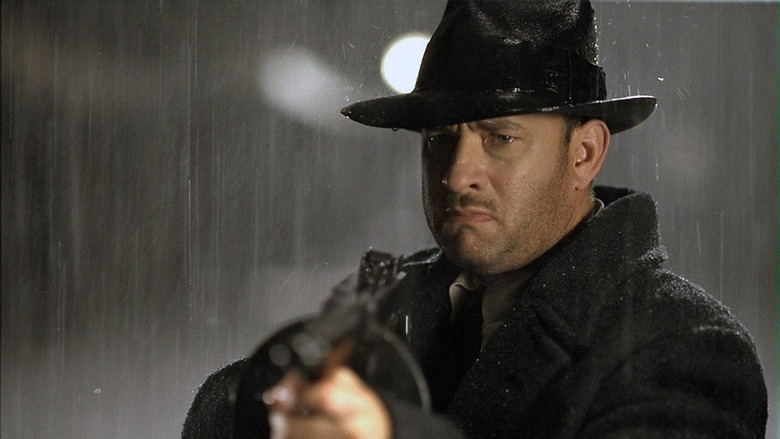
Road to Perdition was a bizarre second film for Sam Mendes. Having just won an Academy Award for directing American Beauty, a gangster flick seemed like a strange choice to follow up to his debut. However, Mendes treats what could have been a brutal revenge flick in a sensitive manner.
This tender aesthetic can be witnessed in the film’s action scenes, particularly the gunfight in the street. With beautiful cinematography by Conrad L. Hall (inspired by the artworks of Edward Hopper) and a haunting piano tune from Thomas Newman, Mendes aims to show the impact of the violence.
Gangster John Rooney (Paul Newman, in his final film role) stands motionless, the gunfire not heard, as the camera sweeps through the carnage around him. His men gunned down one by one, till he is the only one left.
Mendes could have made it longer, louder and more exciting but instead chose to show only what he had to. This is the most quietly devastating gunfight committed to cinema.
15. LA Confidential (1997)
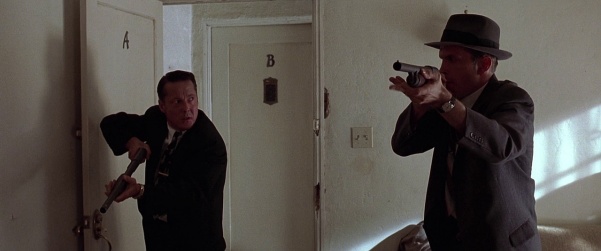
A director known for making B-grade thrillers, a star best known for playing a disabled criminal and a pair of unknowns from Australia playing American cops. No one expected much from Curtis Hanson’s adaptation of the James Ellroy crime epic LA Confidential. However, all involved managed to exceed expectations, delivering a crime epic with strong performances, a solid script and, especially, airtight direction.
Hanson’s skills behind the camera can be seen with the action scenes, particularly in the final shootout at the Victory Motel. Hanson takes his camera into the room with Ed Exley and Bud White as they make their last stand against a wave of corrupt cops. Amazingly, Hanson never leaves the room once the shooting starts. No wide angles from outside, no perspective from the villains. He stays with Exley and White throughout their ordeal.
A lesser director would either have botched it or have avoided it altogether but Hanson not only manages to maintain the intensity, he adds a layer of tension when the shooting stops. The audience knows just as much as the heroes in terms of what the villains are doing. Whistles and footsteps only hint as to whether the next attack will come through the door or a window.
The fight only lasts a few minutes but leaves a lasting impression, one that remains as the film’s climax rolls in.